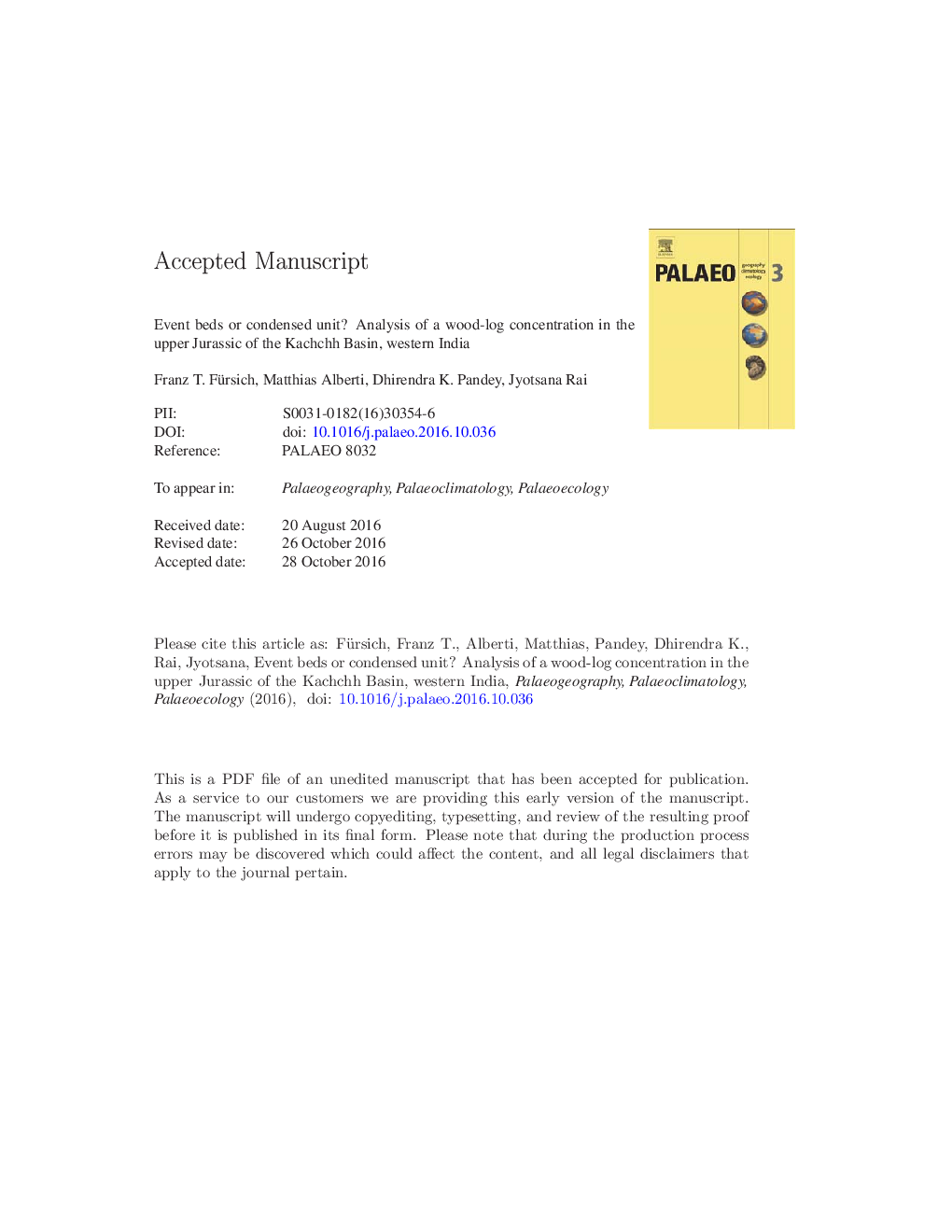| Article ID | Journal | Published Year | Pages | File Type |
|---|---|---|---|---|
| 5756048 | Palaeogeography, Palaeoclimatology, Palaeoecology | 2017 | 31 Pages |
Abstract
The 2-m-thick Wood-Log Bed is a highly ferruginous Middle Oxfordian rock unit exposed in the dry bed of the river Tramau in the Wagad Uplift of the eastern Kachchh Basin, western India, and composed of several layers. The bed contains, at several levels, permineralised conifer wood logs, seeds (Carpolites), cones (Araucarites), leaves (Brachyphyllum, Podozamites), possible bennettitalean flowers (?Williamsonia), and abundant wood debris in a poorly sorted muddy sandstone with scattered coarse quartz grains. The wood concentration is interpreted as the result of episodic flash floods in the hinterland situated in the east. Associated with the wood fossils are abundant ammonites which, together with the ferruginous nature of the sediment, point to offshore sediment starvation. Decay of the plant material might have led to widespread anoxia at the sea floor which restricted the benthic macrofauna for much of the time. Thus, the Wood-Log Bed is the product of two processes, episodic flash floods and sediment starvation. Signs of these processes can be seen in age-equivalent sediments throughout the Kachchh Basin.
Keywords
Related Topics
Physical Sciences and Engineering
Earth and Planetary Sciences
Earth-Surface Processes
Authors
Franz T. Fürsich, Matthias Alberti, Dhirendra K. Pandey, Jyotsana Rai,
